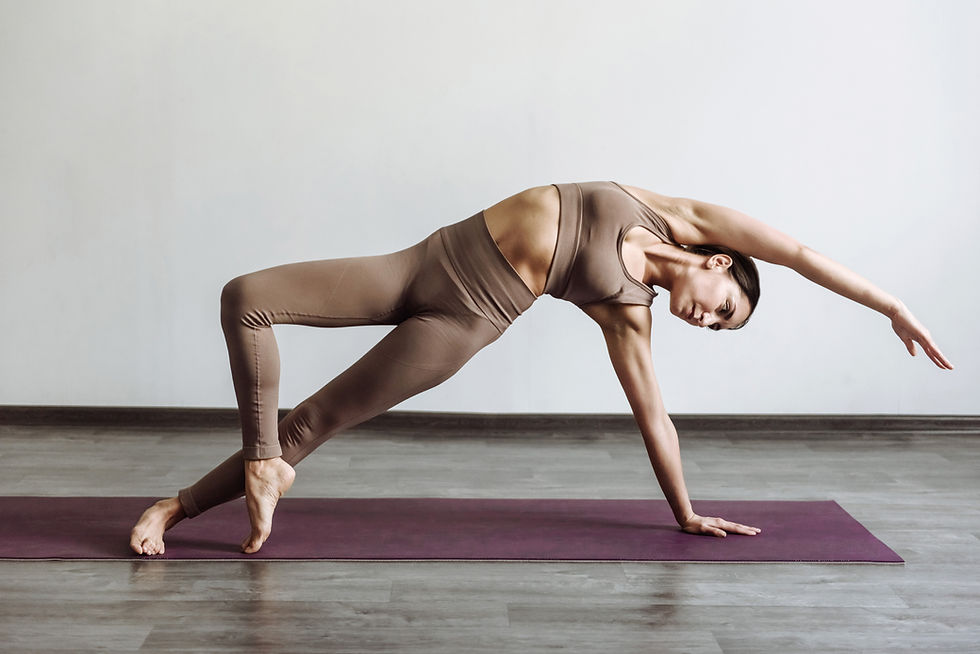Knee Valgus
- Yoga Haven

- Sep 12, 2023
- 2 min read
Knee valgus, commonly referred to as "knocked knees," is a biomechanical condition that involves the inward angling of the knees when standing or moving. This deviation from the normal alignment can have various underlying causes and potential effects on the body. In this blog post, we'll delve into the reasons behind knee valgus, its impact on overall health, and effective strategies to prevent and address this condition.
Causes of Knee Valgus
Genetics: Genetic predisposition can play a significant role in the development of knee valgus. If a person's family has a history of this condition, they might be more prone to developing it themselves.
Muscle Imbalances: Weakness or imbalances in the muscles around the hip, thigh, and lower leg can contribute to knee valgus. The quadriceps, hamstrings, and hip abductors are particularly important for maintaining proper knee alignment.
Joint Structure: Variations in the shape and alignment of the bones around the hip and knee joints can lead to altered mechanics and result in knee valgus.
Foot Pronation: Overpronation of the feet (excessive inward rolling) can disrupt the alignment of the lower limbs, potentially causing knee valgus.
Effects of Knee Valgus
Joint Stress: Knee valgus places increased stress on the knee joint, particularly on the medial (inner) side. This can lead to joint discomfort, pain, and an elevated risk of knee injuries, such as ligament strains and tears.
Reduced Performance: Athletes with knee valgus might experience reduced performance and stability during activities that require lateral movement or changes in direction.
Postural Complications: The misalignment caused by knee valgus can influence overall posture, potentially leading to issues in the lower back, hips, and pelvis.
Prevention and Management
Strength Training: Engaging in targeted strength training exercises for the quadriceps, hamstrings, and hip abductors can help correct muscle imbalances and improve knee alignment.
Proper Footwear: Wearing appropriate footwear that provides arch support and helps counteract overpronation can aid in maintaining proper lower limb alignment.
Body Mechanics Awareness: Paying attention to body mechanics during movements, such as squatting and jumping, can help prevent knee valgus. Keeping the knees in line with the toes is crucial.
Stretching and Mobility: Regular stretching and mobility exercises can enhance flexibility and reduce muscle tightness, contributing to better overall alignment.
Consulting Professionals: If knee valgus is causing pain or significantly affecting daily life, it's important to consult with medical professionals, such as orthopedic specialists or physical therapists, for personalized guidance and treatment.
Conclusion
Knee valgus is a condition that can impact individuals of all ages, affecting their joint health, athletic performance, and overall well-being. By understanding the causes, effects, and preventive measures associated with knee valgus, individuals can take proactive steps to address the condition and maintain optimal lower limb alignment. Remember, seeking professional advice is crucial for accurate diagnosis and effective treatment.






Comments